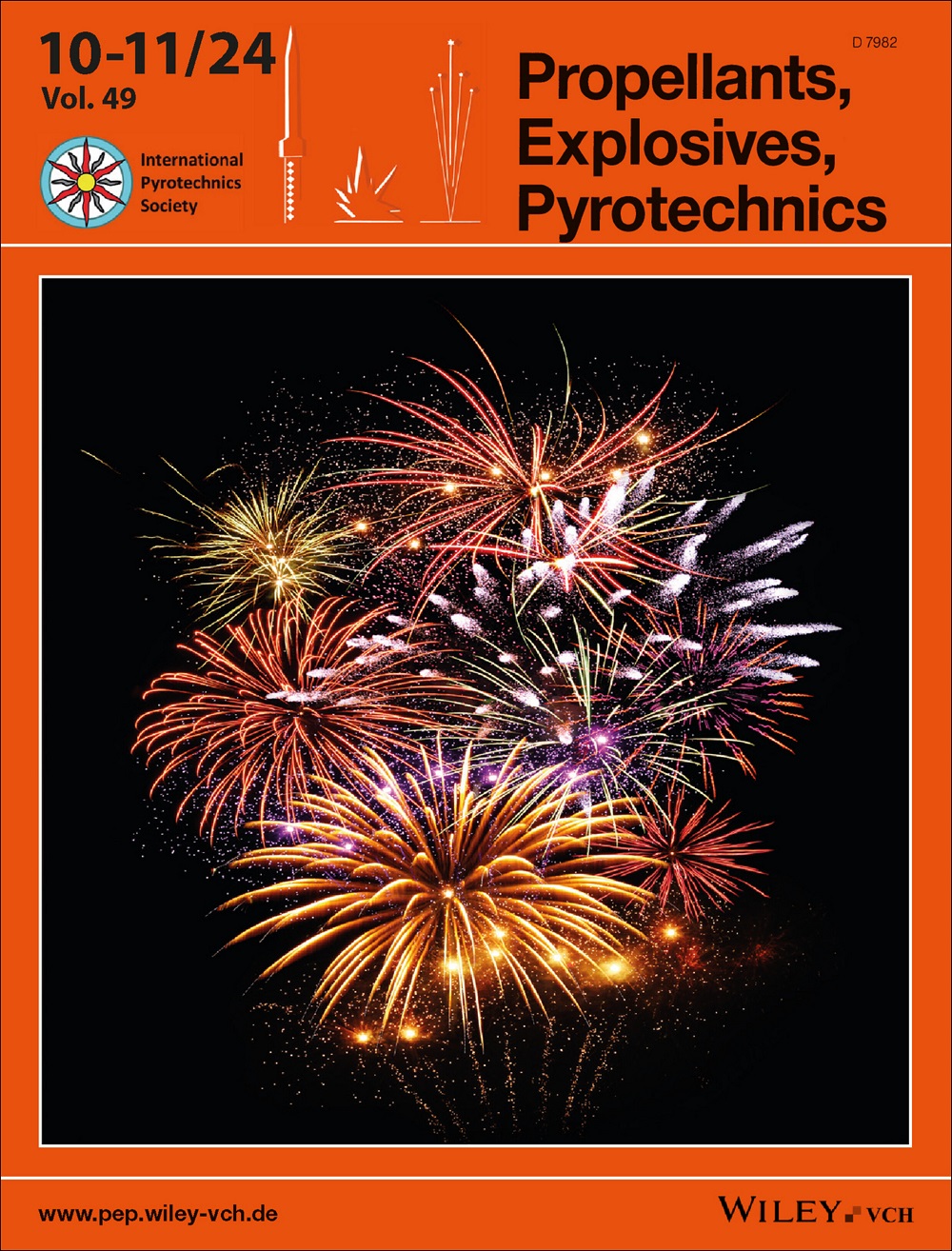基于激光调制光谱分析的固体火箭发动机烟羽透光率测量方法
IF 2
4区 工程技术
Q3 CHEMISTRY, APPLIED
引用次数: 0
摘要
利用透光率测量方法表征固体火箭发动机烟雾特征信号,可为低烟雾特征信号固体推进剂和发动机的开发设计提供重要参考。本文提出了基于激光调制光谱分析的固体火箭发动机烟羽透光率测量方法。通过使用 405 nm 激光作为光源和窄带滤波器检测方法,可以最大限度地减少烟羽辐射对固体火箭发动机烟羽透光率测量的影响。此外,结合激光调制频谱分析技术,通过激光调制频率选择信号幅度,提高了信号的信噪比。与激光恒流测量模式相比,带频谱分析的激光高频调制测量模式能有效提高光学透射率的测量精度。在此基础上,开发了固体火箭发动机烟羽透射率测试系统,用于测量不同推进剂和燃烧室压力的标准测试发动机的烟羽。结果表明,该系统能有效测量烟羽的透光率。通过降低固体推进剂的铝含量或增加燃烧室的压力,可以提高固体火箭发动机烟雾的透光率。因此,这项研究为评估固体火箭发动机烟雾浓度提供了有效的测量工具,有利于开发低烟特性信号固体推进剂和发动机。本文章由计算机程序翻译,如有差异,请以英文原文为准。

Light transmittance measurement method of solid rocket motor plume based on laser modulation spectrum analysis
The light transmittance measurement method, which is used to characterize smoke characteristic signal of solid rocket motor plume, can provide important reference for development and design of low smoke characteristic signal solid propellants and motors. The light transmittance measurement method of solid rocket motor plume based on laser modulation spectrum analysis is proposed in this paper. By using a 405 nm laser as the light source and a narrow-band filter detection method, the influence of plume radiation on the measurement of light transmittance of solid rocket motor plume smoke can be minimized. Additionally, combined with the laser modulation spectrum analysis technology, the signal amplitude is selected by the laser modulation frequency to improve the signal-to-noise ratio of the signal. Compared with the laser constant current measuring mode, laser high-frequency modulation measuring mode with spectrum analysis effectively improves the optical transmittance measurement accuracy. Based on this, a solid rocket motor plume smoke transmittance test system is developed to measure the plume smoke of standard test motors with different propellants and combustion chamber pressures. The results demonstrate that the system can effectively measure the light transmittance of the plume smoke. The light transmittance of solid rocket motor plume can be increased by reducing the aluminum content of solid propellant or increasing the pressure of the combustion chamber. Thus, this research provides an effective measuring tool for evaluating smoke concentration of solid rocket motor plume, which is beneficial to develop low smoke characteristic signal solid propellants and motors.
求助全文
通过发布文献求助,成功后即可免费获取论文全文。
去求助
来源期刊

Propellants, Explosives, Pyrotechnics
工程技术-工程:化工
CiteScore
4.20
自引率
16.70%
发文量
235
审稿时长
2.7 months
期刊介绍:
Propellants, Explosives, Pyrotechnics (PEP) is an international, peer-reviewed journal containing Full Papers, Short Communications, critical Reviews, as well as details of forthcoming meetings and book reviews concerned with the research, development and production in relation to propellants, explosives, and pyrotechnics for all applications. Being the official journal of the International Pyrotechnics Society, PEP is a vital medium and the state-of-the-art forum for the exchange of science and technology in energetic materials. PEP is published 12 times a year.
PEP is devoted to advancing the science, technology and engineering elements in the storage and manipulation of chemical energy, specifically in propellants, explosives and pyrotechnics. Articles should provide scientific context, articulate impact, and be generally applicable to the energetic materials and wider scientific community. PEP is not a defense journal and does not feature the weaponization of materials and related systems or include information that would aid in the development or utilization of improvised explosive systems, e.g., synthesis routes to terrorist explosives.
 求助内容:
求助内容: 应助结果提醒方式:
应助结果提醒方式:


